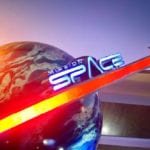 History
History  History
History  Technology
Technology Top 10 Everyday Tech Buzzwords That Hide a Darker Past
 Humans
Humans 10 Everyday Human Behaviors That Are Actually Survival Instincts
 Animals
Animals 10 Animals That Humiliated and Harmed Historical Leaders
 History
History 10 Most Influential Protests in Modern History
 Creepy
Creepy 10 More Representations of Death from Myth, Legend, and Folktale
 Technology
Technology 10 Scientific Breakthroughs of 2025 That’ll Change Everything
 Our World
Our World 10 Ways Icelandic Culture Makes Other Countries Look Boring
 Misconceptions
Misconceptions 10 Common Misconceptions About the Victorian Era
 Mysteries
Mysteries 10 Strange Unexplained Mysteries of 2025
 History
History 10 Things You Didn’t Know About the American National Anthem
 Technology
Technology Top 10 Everyday Tech Buzzwords That Hide a Darker Past
 Humans
Humans 10 Everyday Human Behaviors That Are Actually Survival Instincts
Who's Behind Listverse?

Jamie Frater
Head Editor
Jamie founded Listverse due to an insatiable desire to share fascinating, obscure, and bizarre facts. He has been a guest speaker on numerous national radio and television stations and is a five time published author.
More About Us Animals
Animals 10 Animals That Humiliated and Harmed Historical Leaders
 History
History 10 Most Influential Protests in Modern History
 Creepy
Creepy 10 More Representations of Death from Myth, Legend, and Folktale
 Technology
Technology 10 Scientific Breakthroughs of 2025 That’ll Change Everything
 Our World
Our World 10 Ways Icelandic Culture Makes Other Countries Look Boring
 Misconceptions
Misconceptions 10 Common Misconceptions About the Victorian Era
 Mysteries
Mysteries 10 Strange Unexplained Mysteries of 2025
10 Groundbreaking Space Missions That Flew under the Radar
Since the dawn of the space age in the 1950s, nations around the world have launched thousands of robotic explorers into the cosmos. These intrepid spacecraft have traveled across the solar system and beyond, revealing our universe’s most closely-guarded secrets. Names like Apollo, Voyager, and Hubble shine brightly in the public imagination, having earned their places in history books.
Yet for every famous space mission, there are dozens of obscure—but pioneering—missions that accomplished critical firsts without fanfare. These pathfinding spacecraft overcame immense technological hurdles to travel where no machine had been before. They braved the unknown and succeeded against the odds to rewrite what we know about our solar system and universe.
Though largely forgotten today, these space missions deserve recognition for their revolutionary achievements. From the first close-up view of a comet to the first landing on Mars, these trailblazers demonstrated what was possible and paved the way for future exploration. Here are 10 groundbreaking space missions that flew under the radar but accomplished pioneering firsts in the name of science and discovery.
Related: 10 Space Myths We Believe Because Of Movies
10 Luna 3: Unveiling the Moon’s Hidden Face
In the annals of space exploration, few missions have been as groundbreaking as Luna 3’s. Launched by the Soviet Union in 1959, Luna 3 had a unique objective: photographing the Moon’s elusive far side, a region perpetually hidden from Earth’s view.
The spacecraft embarked on its pioneering journey on October 4, 1959. As it traveled beyond the Moon, Luna 3 prepared to capture the first-ever images of the Moon’s unseen landscape. The world waited with bated breath as the spacecraft disappeared behind the lunar surface, only to re-emerge with a treasure trove of unprecedented data.
Luna 3 snapped 29 astonishing images, revealing a rugged terrain marked by countless small craters. This was a stark contrast to the familiar lunar face visible from Earth, known for its large, dark lunar seas. Luna 3’s mission not only expanded our knowledge of the Moon but also marked a significant milestone in space exploration. It stands as a testament to humanity’s relentless pursuit of knowledge, reminding us that even in the vast expanse of space, there is always more to discover.[1]
9 Venera 7: Braving Venus’s Inferno
In 1970, the Soviet Union once again etched its name in the annals of space exploration with the launch of Venera 7, a spacecraft destined for the scorching surface of Venus. With temperatures soaring to 880°F (471°C) and atmospheric pressure over 90 times that of Earth, Venus presented a formidable challenge. Yet, Venera 7 was designed to brave these odds.
On December 15, 1970, after a four-month journey through space, Venera 7 began its descent into the Venusian atmosphere. Despite the intense heat and crushing pressure, the spacecraft survived the descent and landed successfully on the planet’s surface.
Although Venera 7 only transmitted data for 23 minutes before succumbing to the extreme conditions, it achieved something extraordinary: It sent the first signals directly from another planet’s surface back to Earth. This pioneering mission not only proved that exploration of Venus was possible but also paved the way for future missions to uncover the planet’s many mysteries. Venera 7 stands as a testament to human ingenuity, demonstrating that even the most hostile worlds can be reached.[2]
8 Pioneer 10: A Journey to the Outer Planets
In 1972, NASA launched Pioneer 10, a spacecraft destined for an unprecedented journey to the outer solar system. At the time, no spacecraft had ventured beyond Mars, and the mysteries of deep space remained largely unexplored.
Equipped with state-of-the-art instruments, Pioneer 10 was tasked with imaging Jupiter and probing its massive radiation belts. On December 3, 1973, the spacecraft made history by flying within 81,000 miles (130,357 kilometers) of Jupiter’s cloud tops. It became the first spacecraft to traverse the asteroid belt, surviving a bombardment of small space rocks during its passage.
After its encounter with Jupiter, Pioneer 10 continued its journey, eventually becoming the first manmade object to achieve escape velocity from the solar system. This groundbreaking mission demonstrated the feasibility of interplanetary travel far beyond Mars and paved the way for future outer planets missions. Pioneer 10’s success marked a significant leap for interstellar exploration, showing that even the vast distances of space could not deter humanity’s quest for knowledge.[3]
7 Viking 1: The Unsung Hero of Mars Exploration
Before the Mars rovers started hogging the headlines, a plucky pioneer named Viking 1 was making history. Launched on August 20, 1975, this audacious spacecraft was the first to land on the Red Planet and beam back clear images to an eager world.
After a nail-biting 10-month journey, Viking 1 touched down in Chryse Planitia, a smooth plain on Mars. But it didn’t start posing for photos right away. The first month was spent scouting the perfect landing sites.
Once it had found its feet, Viking 1 started snapping, capturing the first panoramic views of Mars’s surface. Over six years, it sent back over 1,400 images and analyzed the Martian soil and atmosphere. While it didn’t find ET, its groundbreaking mission paved the way for the Mars exploration we see today.[4]
6 Giotto: The Comet Chaser
In 1986, the European Space Agency (ESA) launched a daring mission to encounter a famous visitor to our inner solar system—Halley’s Comet. While Halley’s Comet had been observed from Earth throughout history, no spacecraft had ever studied it up close. The Giotto probe, equipped with cameras, instruments, and a dust shield, was all set to analyze the comet’s nucleus as it passed by.
On March 13, 1986, Giotto successfully intercepted Halley’s Comet, coming within a hair-raising 370 miles (596 kilometers) of its nucleus. It captured detailed photos of the comet’s icy heart for the first time and measured the composition and mass of ejected material. Giotto also observed cometary jet activity as Halley’s comet spewed dust and gas while warming in its approach to the Sun.
Despite being damaged by dust particle impacts during its daring flyby, Giotto survived its close comet encounter. It transmitted invaluable data back to Earth, giving scientists their first intimate look at a comet. As the first spacecraft to visit a comet, Giotto proved we could study these time capsules of the early solar system up close. Its success paved the way for future comet-chasing missions like Deep Space 1 and Stardust.[5]
5 Ulysses: The Solar Polar Explorer
In 1990, the joint NASA-ESA Ulysses mission embarked on a daring journey to the uncharted territories of our Sun’s poles. While the Sun’s equatorial region had been studied, its poles remained a mystery. Ulysses, equipped with an array of scientific instruments, was set to change that.
After launching, Ulysses set off on a unique trajectory to reach higher solar latitudes. In 1994, the intrepid spacecraft flew over the Sun’s north pole for the first time. Over six years, Ulysses made three orbits of the Sun, analyzing its polar magnetic fields, solar wind speeds, and cosmic rays.
Before Ulysses, solar scientists could only study the Sun’s equatorial region visible from Earth. Ulysses provided a complete picture of the Sun’s environment in three dimensions. Its observations led to new discoveries about how the Sun’s magnetic field influences our planet and the entire solar system. As a pioneering solar polar mission, Ulysses fundamentally changed our understanding of the Sun and its dynamic influence.[6]
4 NEAR Shoemaker: The Asteroid Whisperer
In 1996, NASA launched the NEAR Shoemaker mission, a daring venture that would make history by becoming the first spacecraft to orbit and land on an asteroid. The target was 433 Eros, a large, enigmatic near-Earth asteroid. Scientists hoped that by examining Eros up close, they could uncover clues about the origins of asteroids.
After a four-year journey, NEAR Shoemaker arrived at Eros in February 2000 and became the first spacecraft to orbit an asteroid. For a year, it made close passes, meticulously mapping the asteroid’s surface features, composition, and mass distribution. Then, in February 2001, NEAR Shoemaker did the unthinkable: it maneuvered to the surface and successfully touched down intact—the first asteroid landing ever.
Though not designed to land, NEAR Shoemaker transmitted valuable surface data for two weeks before its batteries died. This intrepid mission provided the closest look at an asteroid to date and the first evidence that near-Earth asteroids are loose piles of rubble rather than solid chunks. As the first mission to orbit and land on an asteroid, NEAR Shoemaker opened our eyes to asteroids’ true nature. It’s like the spacecraft whispered to the asteroid, “Tell me your secrets,” and boy, did Eros spill the beans!”[7]
3 Stardust: The Comet Whisperer
In 1999, NASA launched a mission that would make history by becoming the first to return a cometary sample and extraterrestrial material from outside the Moon’s orbit to Earth. The mission, aptly named Stardust, had its eyes set on the comet Wild-2. Armed with an aerogel collector grid, a navigation camera, and a dust flux monitor instrument, Stardust was ready to get up close and personal with the comet.
After a five-year journey, Stardust made a close flyby of Wild-2 in 2004, collecting comet and interstellar dust. Two years later, the samples made it back to Earth in a return capsule that landed in the Utah desert. The mission’s samples indicated that some comets may have included materials ejected from the early sun and may have formed very differently than scientists had theorized.
The spacecraft, which was still operational, was later recycled for the Stardust-NExT mission, which flew by comet Tempel 1 on February 14, 2011. This marked the first time a comet had been visited twice by any spacecraft. Talk about a second date! As the first mission to return a cometary sample to Earth, Stardust gave us an intimate look at these celestial time capsules and their secrets.[8]
2 Hayabusa: The Daredevil of Space
In 2003, the Japanese Aerospace Exploration Agency (JAXA) launched the Hayabusa mission, a daring venture that would make history by becoming the first spacecraft to return samples from an asteroid back to Earth.
Hayabusa, which means falcon in Japanese, swooped down on its target, the near-Earth asteroid 433 Eros, not once but twice, making two successful landings and collecting samples before making its way back home. Talk about a space-age heist!
The spacecraft had to navigate through space for billions of miles, withstand the harsh conditions of outer space, and then land on an asteroid only about one-third of a mile (half a kilometer) in size. It’s like finding a needle in a cosmic haystack and then landing on it!
Despite the odds, Hayabusa completed its mission successfully, returning to Earth in 2010 with precious cargo onboard—the first-ever asteroid samples. So here’s to Hayabusa, the daredevil of space, who swooped, scooped, and looped its way into the history books![9]
1 Moonshot: India’s Chandrayaan-1
In 2008, the Indian Space Research Organisation (ISRO) launched its first lunar probe, Chandrayaan-1. This wasn’t just a “shoot for the moon” mission. Chandrayaan-1 was on a quest to study the Moon’s surface and, in a twist worthy of a Bollywood plot, it discovered evidence of water.
Chandrayaan-1 didn’t just orbit the Moon like a shy suitor. It went all in, dropping a probe onto the lunar surface near the Shackleton Crater at the lunar south pole. It’s like sending a love letter and then showing up at the doorstep!
The mission was not without its drama. After a year of successful operation, the spacecraft lost radio contact in 2009. But like the climax of a good movie, it had already completed 95% of its mission objectives.
So here’s to Chandrayaan-1, the lunar explorer that didn’t just reach for the Moon but also touched it. And in doing so, it opened a new chapter in lunar exploration.[10]








